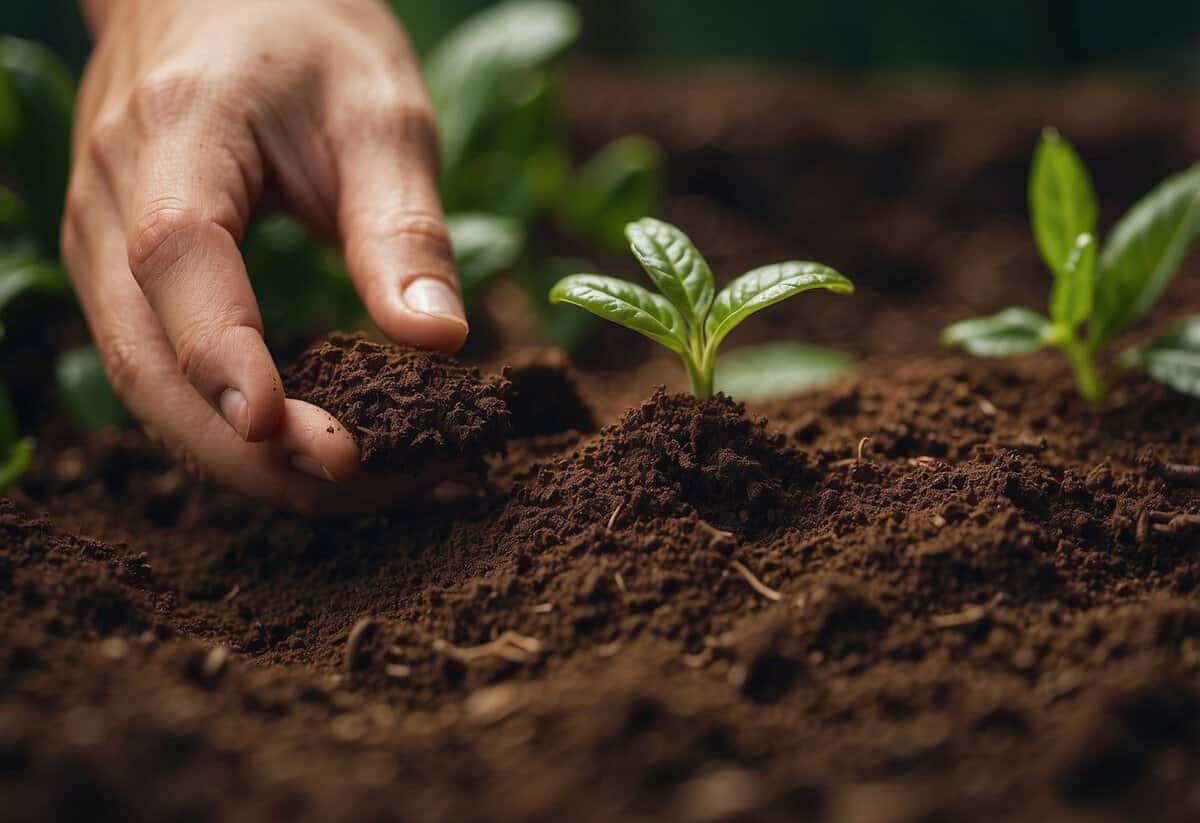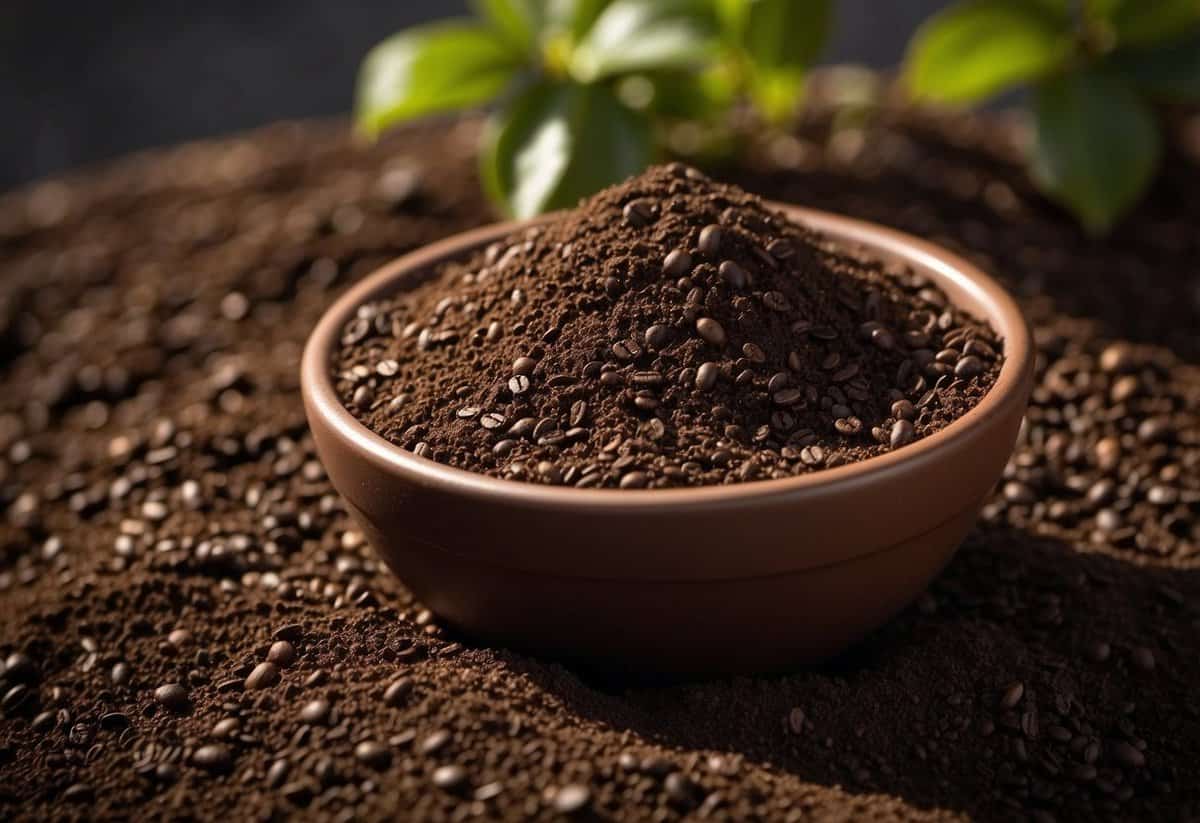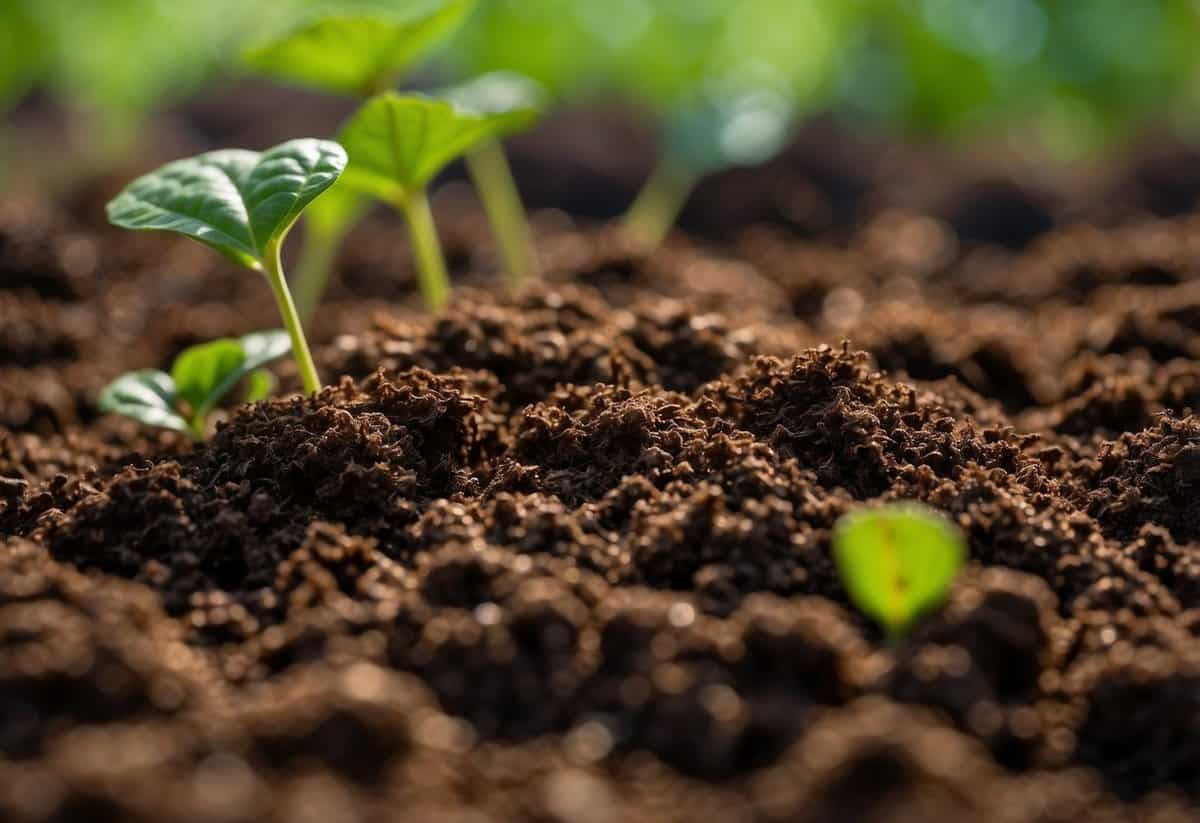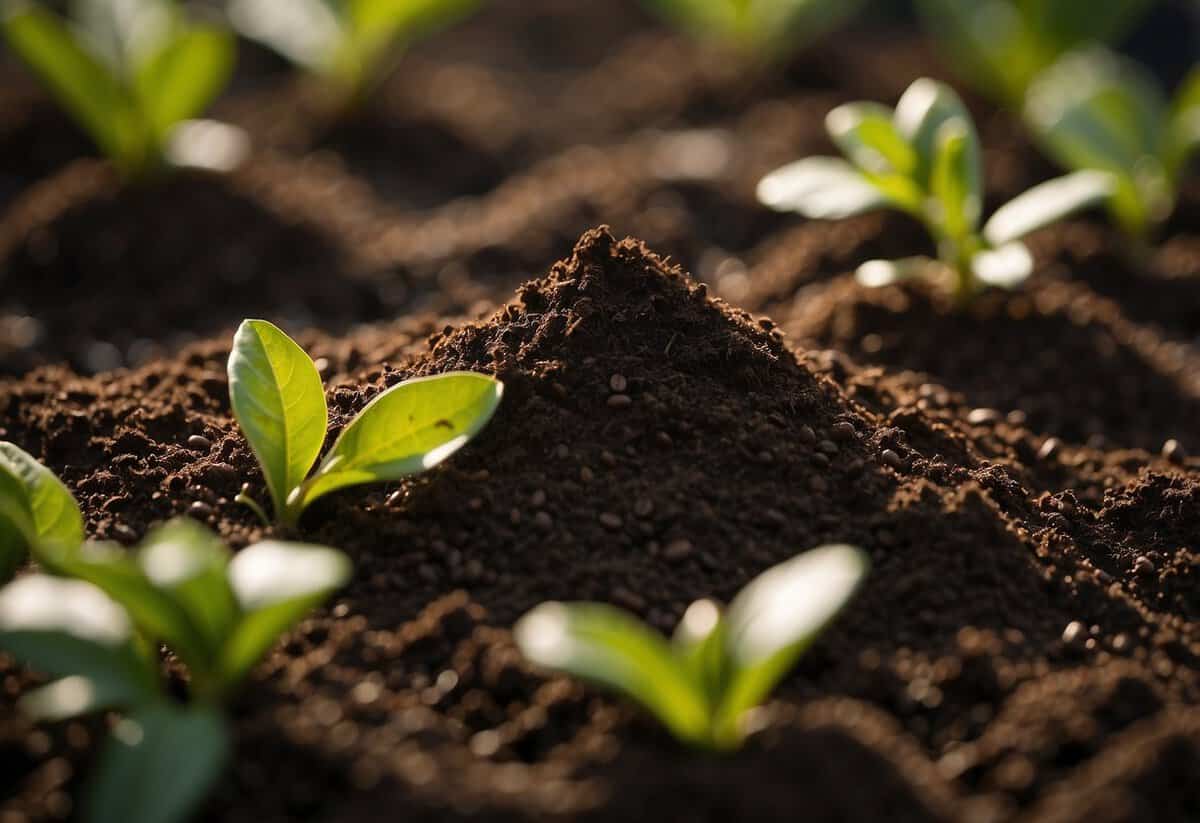What Are the Disadvantages of Coffee Grounds as Fertilizer? Key Points to Consider
Using coffee grounds as fertilizer might sound like a brilliant idea, especially with the promise of recycling waste and providing nutrients to your garden. However, one major disadvantage is their acidity, which can pose a problem for plants that prefer neutral or alkaline soils. While plants like azaleas and blueberries thrive in acidic conditions, many others might struggle, making it important to consider what you are planting.

Coffee grounds can also create an imbalance in soil nutrients. They are rich in nitrogen, which is great for growth, but too much nitrogen may stunt your plants and affect their development. This delicate balance is crucial, as an excess of any nutrient can be harmful.
Another issue you might encounter with coffee grounds is their effect on soil structure and moisture retention. If not properly composted or used in moderation, they can lead to poor drainage and compacted soil. Learn more about the pros and cons of coffee grounds before adding them to your garden to ensure your plants get the best possible care.
Understanding Coffee Grounds as Fertilizer

Using coffee grounds as fertilizer can be beneficial for your garden but you need to understand their chemical composition and how they compare to traditional fertilizers. Each type has its unique benefits and drawbacks.
Chemical Composition of Coffee Grounds
Coffee grounds contain several important nutrients. They are rich in nitrogen which helps with plant growth. Besides nitrogen, they also have smaller amounts of phosphorus and potassium. These key nutrients are vital for plant health and development.
In addition to these, coffee grounds have calcium and magnesium, which can aid in strengthening plants.
Coffee grounds are naturally acidic, often with a pH around 6.8. This means they can be especially helpful for acid-loving plants, like azaleas and blueberries.
However, using too many grounds without balancing the soil can lead to acidity problems. So, you should mix them with other compost materials to neutralize the pH levels.
Comparing Coffee Grounds to Traditional Fertilizers
When comparing coffee grounds to traditional fertilizers, you will find both benefits and limitations. Traditional fertilizers often have a balanced nutrient profile, with measured amounts of nitrogen, phosphorus, and potassium.
Coffee grounds, on the other hand, are a more natural option but their nutrient levels can be inconsistent. They release nitrogen slowly, acting as a slow-release fertilizer. This can be advantageous for maintaining long-term soil health.
Traditional fertilizers might have added minerals like magnesium and calcium in precise amounts, while coffee grounds provide these nutrients in less predictable quantities.
Coffee grounds can improve soil structure by enhancing aeration and drainage. They can also retain moisture, helping plants stay hydrated.
By mixed together with other compost, you balance their acidic nature and prevent potential issues with your soil pH.
Potential Drawbacks for Soil Health

Using coffee grounds as fertilizer can affect soil pH and structure, and may also impact seedling growth. Understanding these issues can help you decide if coffee grounds are the right choice for your garden.
Effects on Soil pH and Structure
Coffee grounds are naturally acidic, with a pH between 4.5 to 6.0. They can lower the pH of soil, making it more acidic. This can benefit acid-loving plants like azaleas and blueberries, but harm plants that prefer neutral or alkaline soil.
You should avoid using coffee grounds in large amounts if your soil is already acidic. Over time, too much acidity can weaken the soil structure. This could lead to poor water retention and nutrient availability for your plants.
It’s vital to test your soil pH before adding coffee grounds. If your soil is already acidic, consider using other organic matter or compost instead.
Impact on Seedling Growth
Coffee grounds can impact seedling growth in a couple of ways. Fresh grounds might be too acidic and make it difficult for seeds to germinate and thrive. The high nitrogen content in coffee can also be too strong for young plants.
When using coffee grounds, make sure they are well-composted. Mixed compost is less likely to harm seedlings and can provide balanced nutrients. Keep an eye on the thickness when spreading coffee grounds. A thick layer can compact soil and restrict seedling root development.
By being mindful of how and when you use coffee grounds, you can avoid many of these drawbacks and create a healthier environment for your plants.
Influence on Garden Ecosystem

Using coffee grounds as fertilizer can affect your garden in various ways. Some issues include attracting pests and inhibiting beneficial organisms, and the potential impact of caffeine content.
Attracting Pests and Inhibiting Beneficial Organisms
Garden pests like ants, slugs, and snails may be attracted to coffee grounds. These pests can damage your plants and reduce your garden’s overall health.
Coffee grounds can also affect beneficial organisms like worms and microorganisms. While worms may avoid heavily caffeinated environments, microorganisms might struggle to thrive. These small creatures are crucial for breaking down organic material and nourishing your soil. Balancing coffee grounds with other compost materials can help reduce these negative effects.
Caffeine Content and its Consequences
Caffeine content in coffee grounds can have several consequences for your garden. High levels of caffeine can inhibit the growth of plants, particularly young and delicate ones.
Some plants, such as tomatoes and spinach, might be more sensitive to caffeine and show stunted growth. Even though coffee grounds can improve soil structure, the caffeine within can reduce the health of your garden if not used cautiously. Mixing coffee grounds with other compost can help mitigate this issue and ensure a healthier ecosystem.
Issues with Composting and Mulching

Using coffee grounds in composting and mulching has several challenges. These issues range from acidity problems in your compost pile to common misconceptions about using coffee grounds as mulch.
Challenges in Composting Coffee Grounds
When composting coffee grounds, you should be aware of their high nitrogen content. This means they need to be balanced with carbon-rich materials like dead leaves, shredded paper, or sawdust. Keeping an 11:1 carbon-to-nitrogen ratio is crucial for a healthy compost pile.
Coffee grounds can make your compost too acidic, affecting the breakdown process and the overall quality of your compost. Aim for a mix where coffee grounds make up no more than 20% of your compost volume. Additionally, fresh coffee grounds can cause mold growth, which can be harmful. Maintaining a temperature range of 120 to 160 degrees Fahrenheit helps in properly “cooking” the organic material.
Adding coffee grounds thoughtfully to your compost ensures that you avoid these pitfalls and create nutrient-rich compost for your garden.
Misconceptions About Coffee Grounds as Mulch
Despite their popularity, using coffee grounds as mulch can create issues. One common misconception is that they are always beneficial. Fresh coffee grounds can become compacted, leading to water retention issues. This can create a barrier that prevents air from reaching the soil, suffocating plant roots.
Coffee grounds are naturally acidic, meaning they are suitable only for acid-loving plants like azaleas, blueberries, and rhododendrons. For plants preferring neutral or alkaline soil, coffee grounds can be harmful.
Many gardeners mistakenly believe you can spread coffee grounds directly on the soil. It’s better to mix them with other organic materials to balance the soil composition. This approach prevents the problems associated with using coffee grounds as direct mulch.
Using coffee grounds wisely can make a positive difference, but understanding their limitations is key to successful gardening.
For more details about the disadvantages and proper use of coffee grounds as fertilizer, you can read additional resources.
Practical Considerations for Gardeners

Using coffee grounds in your garden can be helpful, but there are key points to consider. You’ll want to follow best practices and explore alternative uses to make the most out of this organic material.
Best Practices for Using Coffee Grounds in Gardens
When using coffee grounds, it’s important to incorporate them correctly into your garden. Coffee grounds can enhance the soil by adding nutrients such as nitrogen. They are especially beneficial for acid-loving plants like blueberries and azaleas. Below are some tips:
- Composting: Add coffee grounds to your compost pile. Mix them with other organic materials to create a balanced compost.
- Mix with Soil: Rake coffee grounds into the top layer of your garden soil. This prevents clumping and ensures better soil structure.
- Avoid Overuse: Don’t rely solely on coffee grounds. Use them as a supplement alongside other fertilizers.
- Monitor pH Levels: While used coffee grounds are nearly neutral in pH, fresh grounds are acidic. Balance them with other materials if your soil is already acidic.
By following these best practices, you can safely and effectively use coffee grounds in your garden.
Alternative Uses in Gardening and Pest Control
Coffee grounds have other beneficial uses beyond soil enrichment. You can use them to deter common garden pests. For instance:
- Repel Slugs and Snails: Sprinkle coffee grounds around plants like tomatoes and roses to help keep slugs and snails at bay.
- Mulching: Use coffee grounds as organic mulch around acid-loving plants. This helps retain moisture and add nutrients over time.
- Worm Food: If you practice worm composting, coffee grounds are a great addition. They are a good food source for worms, which in turn produce nutrient-rich compost.
Using coffee grounds in these alternative ways can enhance your gardening efforts and promote healthier plants.







